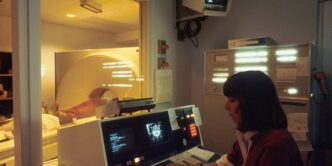The Vive Health Conference just wrapped up, and wow, what a time it was! This event always brings together the smartest people in healthcare and technology. They talk about new ideas and what’s coming next. This year, the vibe was all about how tech is changing patient care and making things better for everyone. From cool AI stuff to new ways to keep our health data safe, there was a lot to take in. It really showed us where healthcare is headed. It’s pretty exciting to see how much things are changing, and fast!
Key Takeaways
- AI is really changing healthcare, helping doctors make better choices and making office work easier. But we need to be careful about how we use it and make sure it’s fair.
- Telemedicine is still a big deal, making it easier for people to see doctors from home. It’s becoming more of a regular part of healthcare, helping fill gaps in care.
- Keeping health data safe is super important, and blockchain technology is a big part of that. It helps make sure patient records are secure and can be shared safely.
- Our personal devices, like smartwatches, are helping us keep an eye on our health every day. They help us stay healthy and can even prevent problems before they start.
- Virtual reality is not just for games anymore; it’s helping with medical training, pain relief, and even mental health. It’s a cool way to make treatments more effective.
Artificial Intelligence Reshaping Healthcare

AI was a major topic at the Vive Health Conference, and it’s clear that it’s not just hype. We’re seeing real applications that could change how healthcare works. AI is poised to transform healthcare by enhancing efficiency and improving patient outcomes. It’s not just about replacing people, but about helping them do their jobs better and faster.
Empowering Precision Medicine with AI
AI’s ability to analyze huge datasets is a game-changer for precision medicine. Instead of a one-size-fits-all approach, AI can help doctors tailor treatments to individual patients based on their unique genetic makeup, lifestyle, and medical history. This means more effective treatments and fewer side effects. For example, AI algorithms can predict a patient’s response to a specific drug, allowing doctors to choose the most appropriate medication from the start. This AI clinical copilot can process patient data quickly, helping doctors make faster, more accurate decisions.
AI-Driven Automation in Clinical Workflows
Doctors and nurses are often swamped with administrative tasks, which takes time away from patient care. AI can automate many of these tasks, such as scheduling appointments, processing insurance claims, and even writing preliminary reports. This frees up healthcare professionals to focus on what they do best: caring for patients. Plus, patients are willing to use AI for routine tasks, like checking balances, if it results in faster service. Lumeris unveiled “Tom”, an AI assistant for primary care teams that helps manage chronic diseases, care gaps, and patient communications.
Ethical Considerations and AI Governance
As AI becomes more prevalent in healthcare, it’s important to address the ethical implications. We need to make sure that AI algorithms are fair, transparent, and don’t perpetuate existing biases. There are also concerns about data privacy and security. It’s important to have clear guidelines and regulations in place to ensure that AI is used responsibly and ethically. Advocate Health emphasized the importance of integrating AI with empathy, describing the picture of success as “technology with human connection.”
Telemedicine and Virtual Care Evolution
Telemedicine has been around for a bit, but it’s really starting to change things up. At the 5th Digital Health Conference, there was a lot of buzz about how it’s not just a temporary fix anymore, but a real part of how healthcare is delivered. It’s not just about video calls with your doctor; it’s becoming a whole new way to manage your health from home.
Redefining Access Through Telehealth
Telehealth is making healthcare more accessible, especially for people who live far away from hospitals or have trouble getting around. It’s breaking down barriers and letting more people get the care they need. Think about it: no more long drives or waiting rooms. You can talk to a doctor from your couch. It’s also helping people get specialist care that might not be available in their area. It’s pretty cool how technology is shrinking the distance between patients and doctors.
Transitioning Telemedicine to Complementary Services
Telemedicine isn’t just a replacement for in-person visits; it’s becoming a complement to them. It’s like having a virtual check-in between appointments or using remote monitoring to keep an eye on things. It’s about making healthcare more convenient and integrated into your life.
Here’s a quick look at how telemedicine is fitting into the bigger picture:
- Follow-up care: Quick check-ins after a procedure.
- Chronic disease management: Regular monitoring and support for conditions like diabetes.
- Mental health support: Easier access to therapy and counseling.
Bridging Gaps in Care with Virtual Solutions
Virtual solutions are stepping up to fill in the gaps in healthcare. They’re helping people manage their health better, especially when it comes to things like mental health and chronic conditions. It’s about using technology to provide support and resources that might not otherwise be available. For example, remote patient monitoring can help doctors keep track of patients with heart conditions, catching problems early and preventing hospital visits. It’s all about being proactive and using technology to improve health outcomes.
Securing Health Data with Blockchain

Unprecedented Security in Data Management
Data security is a big deal, especially in healthcare. At the conference, blockchain came up a lot as a way to keep health data super secure and open. With so much patient info being collected through new tech, blockchain adds a layer of security that’s really important. It’s like having a digital vault for medical records, care plans, and even how devices work, all relying on blockchain’s security.
Ensuring System Interoperability
Blockchain can help different healthcare systems talk to each other more easily. It’s not just about security; it’s also about making sure that systems can share data without any hiccups. This is key for data exchange because when everyone’s on the same page, patient care gets better. Think of it as a universal translator for healthcare data, making sure everyone understands each other.
Protecting Digital Medical Records
Keeping digital medical records safe is a top priority. Blockchain offers a way to protect these records from getting messed with or stolen. It’s like having a tamper-proof seal on each record, so you know it’s the real deal. This is super important for building trust in digital healthcare and making sure patients feel good about their healthcare data being online.
Personal Devices Fostering Wellness
It’s pretty clear that personal devices are becoming a big part of how people think about their health. More gadgets, better connections between them, and easier ways to share info mean more people can actually do something about staying healthy. ViVE 2024 really showed how things like wearable tech, with all their fancy sensors and smart computer programs, are helping us keep an eye on our health in real-time and change our habits. From simple fitness trackers to smartwatches and even stuff we have at home, tech is changing healthcare by helping us focus on staying healthy and making better choices.
Real-Time Health Monitoring
Wearable devices are getting seriously good at tracking all sorts of things. We’re talking heart rate, sleep patterns, activity levels – you name it. This constant stream of data gives people a much clearer picture of what’s going on with their bodies. It’s not just about counting steps anymore; it’s about understanding how your body reacts to different things throughout the day. For example, someone might notice their heart rate spikes when they’re stressed at work, or that they sleep better on nights they avoid caffeine. This kind of insight can be super helpful for making informed decisions about your health. A scoping review published in JMIR focuses on wearable health technology and its integration with electronic health records.
Promoting Preventive Care
Because we can track our health in real-time, we can also prevent issues before they become serious. Think about it: if your device notices your blood pressure is consistently high, it can remind you to check in with your doctor. Or, if you’re not getting enough sleep, it might suggest some relaxation techniques. It’s like having a little health coach on your wrist. This proactive approach is a big shift from waiting until you’re sick to do something about it. It’s about catching problems early and making small changes to stay healthy in the long run.
Reshaping Healthcare Through Lifestyle Modifications
Ultimately, all this data and monitoring is about helping people make better lifestyle choices. Maybe you realize you need to move more, so you start taking the stairs instead of the elevator. Or maybe you see that you’re eating too much junk food, so you start packing healthier lunches. The point is, these devices give you the information you need to make those changes. And because you can track your progress, it’s easier to stay motivated. It’s not just about living longer; it’s about living better. It’s about feeling good, having more energy, and being able to do the things you enjoy. The conference highlighted how customized patient engagement is now possible.
Virtual Reality Enhancing Therapeutics
Okay, so VR in healthcare? It’s not just some sci-fi dream anymore. The ViVE conference really showed how virtual reality is becoming a real tool for therapy. It’s pretty wild to think about, but it makes sense when you see the possibilities.
Immersive Simulations for Medical Training
Think about it: medical students can now practice complex surgeries in a safe virtual environment without any real risk to patients. It’s like a video game, but with actual consequences if they mess up. This kind of training is way more engaging than just reading textbooks, and it can really help doctors and nurses get better, faster. Plus, it’s a great way to learn about rare conditions that they might not see in real life until much later in their careers. It’s a total game changer for medical education.
Virtual Environments for Pain Management
VR is also showing promise in managing pain. Instead of just relying on medication, patients can put on a headset and get transported to a relaxing beach or a calming forest. The distraction can actually reduce the perception of pain, which is huge for people dealing with chronic conditions. It’s not a cure-all, but it’s a great alternative or supplement to traditional pain management techniques. I read about one study where patients using VR needed less pain medication after surgery. That’s pretty impressive.
Revolutionizing Mental Health and Rehabilitation
And it’s not just physical stuff. VR is also making waves in mental health. Therapists are using it to treat anxiety, PTSD, and even phobias. Imagine someone with a fear of heights being able to gradually expose themselves to virtual heights in a controlled environment. It’s a lot less scary than the real thing, and it can help them overcome their fears at their own pace. Plus, for people recovering from strokes or other injuries, VR can provide engaging and motivating rehabilitation exercises. It’s like turning therapy into a game, which makes it way more fun and effective. I think VR therapeutics are going to be huge in the next few years.
Interoperability and Data Exchange
It’s no secret that healthcare data is often trapped in different systems, making it hard to get a complete picture of a patient’s health. ViVE 2025 dedicated a lot of time to discussing how to break down these barriers and make data exchange easier. The goal? Better patient outcomes and a more efficient healthcare system. Interoperability is not just a nice-to-have; it’s a must-have for modern healthcare.
Breaking Down Data Silos
For years, healthcare providers have struggled with incompatible systems that don’t talk to each other. This creates data silos, where important patient information is locked away and inaccessible to those who need it. The discussions at ViVE 2025 centered on strategies to overcome these challenges, including:
- Standardizing data formats to ensure different systems can understand each other.
- Implementing APIs (Application Programming Interfaces) to allow for easier data sharing between platforms.
- Encouraging collaboration between healthcare providers and technology vendors to develop interoperable solutions.
The Role of Cloud and Blockchain in Data Sharing
Cloud computing and blockchain technology are emerging as key enablers of interoperability. Cloud platforms offer a centralized and scalable infrastructure for storing and sharing data, while blockchain provides a secure and transparent way to manage data access and permissions. Here’s how they’re being used:
- Cloud-based data sharing allows healthcare providers to access patient information from anywhere, at any time.
- Blockchain can be used to create a secure and auditable record of data transactions, ensuring data integrity and patient privacy.
- These technologies can help to streamline administrative processes, such as claims processing and prior authorization.
Unifying Fragmented Data Sources
Many healthcare organizations rely on a patchwork of different systems and databases, making it difficult to get a unified view of patient data. Data lakehouse solutions are helping to address this challenge by bringing together structured and unstructured data from multiple sources into a single, centralized repository. This allows healthcare providers to:
- Gain a more complete understanding of patient health.
- Identify trends and patterns in patient data.
- Improve care coordination and reduce duplicative tests and procedures.
It’s a complex problem, but the conversations at ViVE 2025 made it clear that the industry is committed to finding solutions. It’s going to take time and effort, but the potential benefits are huge.
Cybersecurity in the Digital Health Landscape
It’s no secret that healthcare is a HUGE target for cyberattacks. I mean, think about it: tons of sensitive data, aging systems, and a whole lot of interconnected devices. At ViVE, cybersecurity was a major talking point, and honestly, it’s about time. The discussions weren’t just about the problems, though; there were some interesting ideas floating around about how to actually fix things.
Addressing Ransomware Attacks
Ransomware is like the boogeyman of the digital world, and healthcare is definitely not immune. The rise in ransomware attacks targeting hospitals and clinics is alarming, disrupting patient care and costing a fortune. It’s not just about the money, either. These attacks can literally put people’s lives at risk. The conference highlighted the need for better prevention strategies, incident response plans, and collaboration between healthcare providers and cybersecurity experts. It’s a constant game of cat and mouse, but we need to get better at being the cat. One thing that was mentioned was the importance of having a solid disaster response plan, something Andy Puterbaugh from Teladoc Health emphasized.
Adopting Zero-Trust Architectures
Zero-trust is the new buzzword in security, and for good reason. It basically means that you don’t trust anyone, inside or outside your network. Every user and device has to be authenticated and authorized before they can access anything. It’s a more secure approach than the traditional "castle and moat" model, where you just focus on protecting the perimeter. Implementing zero-trust architectures can be complex, but it’s a necessary step for healthcare organizations to protect themselves from modern threats.
Evolving Regulations and Compliance
The rules around data privacy and security are constantly changing, and it can be tough to keep up. HIPAA, GDPR, and other regulations are pushing for tighter compliance measures and mandatory reporting of breaches. It’s not just about avoiding fines, though. It’s about protecting patient privacy and maintaining trust. The conference touched on the need for healthcare organizations to invest in compliance programs and stay informed about the latest regulatory developments. It’s a pain, but it’s a necessary pain. Microsoft’s rural health program is working with hospitals to blend cybersecurity with innovation strategies.
Wrapping Things Up: What ViVE Health Conference Showed Us
So, that’s a quick look back at the ViVE Health Conference. It really showed how much things are changing in healthcare, with new tech popping up everywhere. From smart programs helping doctors to new ways of keeping patient info safe, it’s clear that technology and health are getting super close. As people keep working together and coming up with new ideas, we’re definitely getting closer to a healthier, more connected future for everyone. It’s pretty exciting to think about.
Frequently Asked Questions
How does Artificial Intelligence (AI) make healthcare better?
AI helps doctors and nurses by looking at lots of patient information to suggest the best treatments. It also makes daily tasks easier, like managing appointments and patient records, so healthcare workers can focus more on helping people.
What is telemedicine, and why is it important?
Telemedicine lets you talk to doctors from home using video calls. It’s great for getting medical advice quickly, especially if you live far from a hospital or can’t travel easily. It makes healthcare more available to everyone.
How does blockchain technology protect my health data?
Blockchain is like a super secure digital notebook that keeps your health information safe from hackers. It makes sure only the right people can see your medical records and helps different hospitals share information safely.
What role do personal devices play in staying healthy?
Wearable devices, like smartwatches, track your heart rate, sleep, and activity. They help you stay healthy by giving you real-time info about your body and encouraging good habits to prevent sickness.
How is Virtual Reality (VR) used in healthcare?
Virtual Reality (VR) uses computer-made worlds to help with medical training, like practicing surgeries. It also helps patients with pain management by distracting them and is used in therapy for mental health and physical recovery.
What does ‘interoperability’ mean for my health records?
It means all your health information can be easily shared between different doctors, hospitals, and clinics. This helps everyone involved in your care see your full medical history, leading to better and faster treatment.














